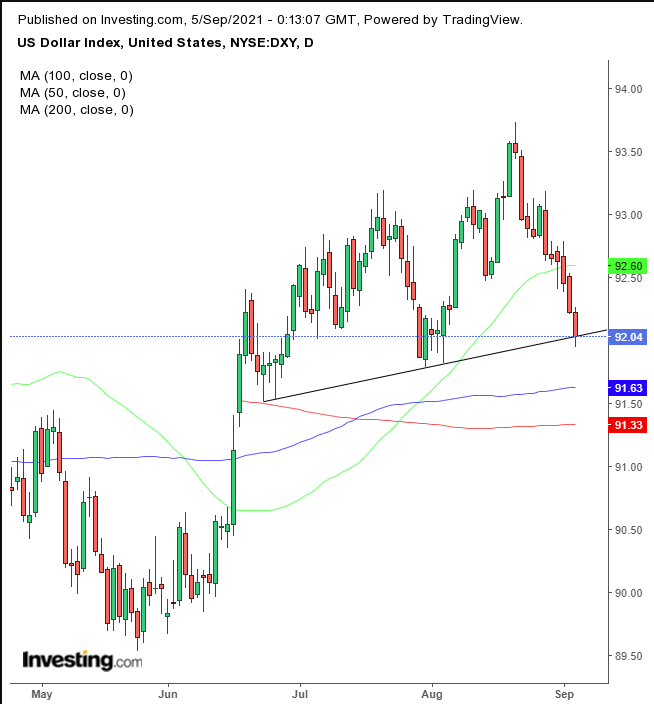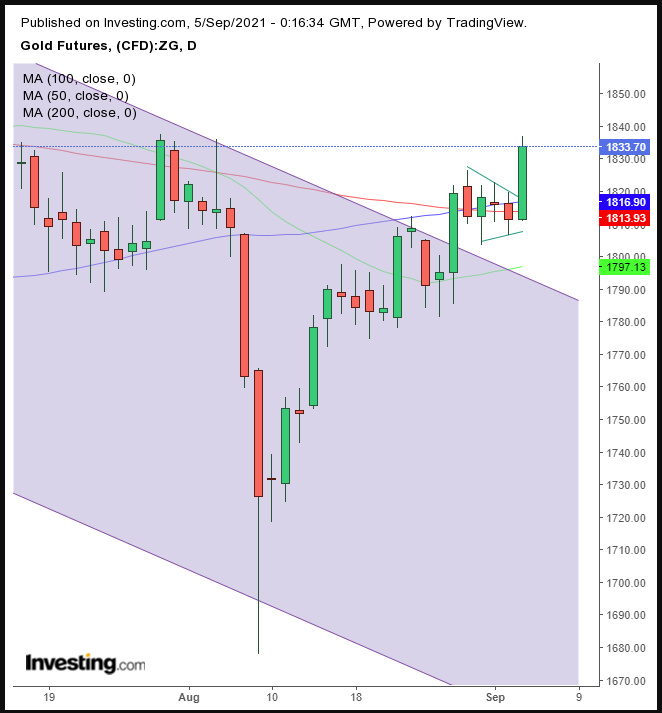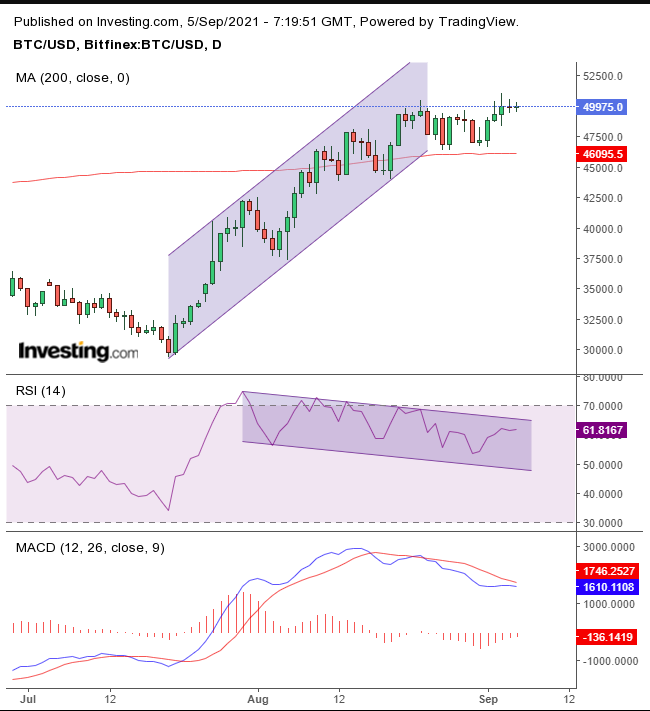- Analysts debate direction of stocks based on nothing for investors to focus on
- Reflation trade reverses, supporting case that investors continue eyeing stimulus
Will investors grow cautious in the wake of disappointing August jobs numbers, even as stocks hit or hover near all-time highs, or will they now drive equities even higher, focusing on the prospect of strong corporate profits going forward?
While we expect stocks to fluctuate in the short-term as markets await another clear catalyst, after the dust settles, we predict investor focus will fix neither on frothy valuations nor corporate results.
Our view remains as it was ahead of Friday's NFP release—it's more likely than not that investors will be bullish specifically because of the weak jobs report. We've often noted that stocks sell off despite improving economic data, on fears of a more rapid end to stimulus, whereas poor figures were greeted with rallies, on the view the negative numbers will help prolong government and central bank support.
Given that's what occurred previously, it stands to reason it should be the case even more so now, just days after the Jackson Hole symposium during which Fed Chair Jerome Powell predicated tightening of monetary policy on an improving jobs market.
Indecision Reigns, New Catalyst Awaited
On Friday, stock traders appeared undecided. With Wall Street analysts warning that buyers will begin questioning whether the most expensive valuations in history are worth betting on, predictions of increased bullishness after a strong earnings season, and our view that we’re likely to see additional gains as the market dodges another bullet in the form of a panicked selloff on the prospect of reduced liquidity in markets—investors seemed to be biding their time. The S&P 500 finished the week flat.
However, digging under the surface, it becomes obvious there are vast differences in sector performance. Technology outperformed on Friday, rising 0.4%, while Utilities (-0.8%) and value shares, such as Materials (-0.7%), Financials, Industrials and Energy (all down -0.6%) underperformed.
In other words, traders rerouted out of value sectors and back into technology's growth stocks. The same paradigm is visible for the indices as well. The tech-heavy NASDAQ 100 outperfored, +0.4% (the same as the SPX technology sector), followed by the NASDAQ Composite with a 0.2% advance...the only two benchmarks in the green on Friday.
On the other side of the Reflation Trade spectrum: the Russell 2000, the index most sensitive to an economic recovery, dropped 0.5%, and the Dow Jones Industrial Average, whose blue chip companies include an array of value stocks, was the second worst performer, with a 0.2 percent dip.
We think this pattern supports our outlook—traders are expecting a weakening economy and thus returning to stocks that outperform during a contraction.
Yields, including for the 10-year benchmark Treasury, jumped on Friday, probably because investors pivoted away from the safety of US sovereign bonds, into risk assets, including stocks, as the timeline for trimming stimulus got pushed further back.

Rates jumped but retreated after touching the neckline of a H&S bottom.
Foreign investors dumping Treasuries, including selling the US dollar as part of the transaction, pushed the greenback lower for a sixth straight day, for the tenth out of eleven days.

The USD dipped below the neckline of a potential top but found support and closed higher.
Gold on the other hand jumped.

The precious metal completed a bullish pennant, which was pierced by both the 100 and 200 DMAs, after the price broke free of a falling channel.
Though Bitcoin has been sputtering since late August, as of this writing it has once again popped above $50,000.

The digital token made a higher high on Friday, but developed a series of doji, indicating the trend could be running out of steam. A close below the 200 DMA for the cryptocurrency would mean it had topped out, as the indicators seem to suggest, having provided negative divergences.
Oil closed lower on Friday.

WTI fell from the top of a falling channel, as the bulls try to complete a H&S bottom.
The Week Ahead
All times listed are EDT
Monday
Labor Day holiday in the United States, Canada. Markets are closed.
4:30: UK – Construction PMI: likely to fall to 56.9 from 58.7 previously.
Tuesday
00:30: Australia – RBA Interest Rate Decision: rates are expected to remain steady at 0.10%.
5:00: Germany – ZEW Economic Sentiment: seen to plunge to 30.0 from 40.4.
19:50: Japan – GDP: anticipated to rise to 0.4% from 0.3% monthly, to 1.6% from 1.3% YoY.
Wednesday
10:00: US – JOLTs Job Openings: expected to drop to 9.281M from 10.073M.
10:00: Canada – BoC Interest Rate Decision: predicted to remain unchanged at 0.25%.
10:00: Canada – Ivey PMI: came in at 56.4 in July.
Thursday
7:45: Eurozone – ECB Monetary Policy Statement, Interest Rate Decision
8:30: US – Initial Jobless Claims: forecast to print at 335K, down from 340K previously.
Friday
2:00: UK – GDP: expected to dip to 0.50%.
2:00: UK – Manufacturing Production: probably edged down to 0.1% from 0.2%.
6:30: Russia – Interest Rate Decision: estimated to rise to 6.75% from 6.50%.
8:30: US – PPI: expected to decline to 0.6% from 1.0%.
8:30: Canada – Employment Change: predicted to plunge to 75.0K from 94.0K
